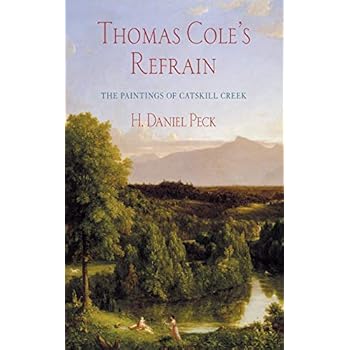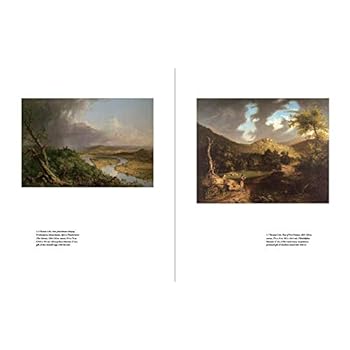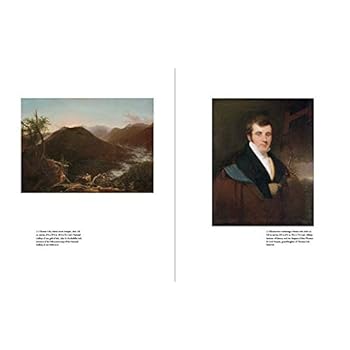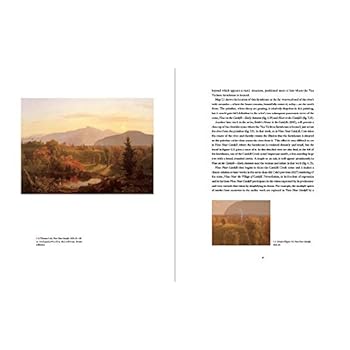Thomas Cole's Refrain: The Paintings of Catskill Creek
Category: Books,History,Americas
Thomas Cole's Refrain: The Paintings of Catskill Creek Details
Review "Thoroughly researched and beautifully written." (The Magazine Antiques) Read more Review "Writing with characteristic precision, eloquence, and authority, and drawing on his vast knowledge of American art, literature, and history, H. Daniel Peck presents a new, convincing interpretation of the landscape painter and British émigré Cole, seeing him as both critic of American industrialization and passionate patriot. Peck offers a captivating story with myriad fresh insights and uncanny contemporary relevance. " (Adrienne Baxter Bell, Marymount Manhattan College, Author of George Inness and the Visionary Landscape)"Thomas Cole's Refrain deftly illuminates the artist's lesser known series of Catskill Creek paintings by tracking down sketches, repeated views, site-specific formations, and emblematic motifs. Peck combines a sensitivity to the poetics of place with a demanding attentiveness to telling visual details. With Peck's interdisciplinary eye, each painting becomes a revelation." (Janice Simon, Lamar Dodd School of Art)"H. Daniel Peck takes his readers on a careful tour of the mysteries informing Cole's Catskill Creek images, peeling back their layers of social commentary and their―often 'hidden'―anxieties and aspirations. The painter who emerges from Peck's pages is not the transatlantic Cole of recent scholarship, but a more local self who imagines the Catskill region as an entire globe within a smaller territory." (Bryan Wolf, Stanford University)"H. Daniel Peck's treatment of Thomas Cole's Catskill pictures is a gem of a book. It is compact yet substantial, dense in detail yet lucid in exposition." (John Wilmerding, Princeton University, and author of Signs of the Artist)"In Thomas Cole's Refrain, H. Daniel Peck moves convincingly from a careful study of the artist's writings to astute analysis of the ten paintings of Catskill Creek that Cole made between 1827 and shortly before his death in 1848. The result of years of research and the study of Cole's sketches and paintings, this is an impressively argued, exceptionally well-written and handsomely illustrated book." (David Schuyler, Franklin & Marshall College, and author of Sanctified Landscape)"A stunning reevaluation of one of Thomas Cole's most beloved locales, in image and in text, H. Daniel Peck's insightful analysis captures the artist's musings, concerns, and deep admiration for the Hudson River Valley. Peck's contribution to the field of American landscape is timely and significant." (Nancy Siegel, Towson University) Read more About the Author H. Daniel Peck is John Guy Vassar, Jr., Professor Emeritus of English at Vassar College. He has chaired the Modern Language Association's Division on Nineteenth-century American Literature and has published and spoken widely on the literary and visual art of the Romantic era. Peck is the author and editor of several books, including Thoreau's Morning Work. Read more

Reviews
Catskill Creek was an iconic place for Thomas Cole. Daniel Peck studies Cole's paintings of Catskill Creek as a "series that isn't a series" -- meaning that the paintings weren't conceived of and executed as a series in the sense that, e.g., his "Voyage of Life" or "Course of Empire" were, but rather that it was a locale to which Cole returned several times over the course of his life to make paintings of the same spot, at different times of year, and of which he conveyed a unique message for each work.Having a personal interest in finding the locations for Cole's paintings, this book was a revelation for me in pointing out that the spot from which Cole painted these works is not now in the middle of some bucolic Greene County scene but is in fact within a part of Catskill town (or village?) called Jefferson Heights. I must get back there soon.What also makes Dan Peck's work interesting is that he's not a professional art historian but a professor of English. This doesn't diminish the validity of his findings, or I should say the interpretations of the paintings, by any means, but it certainly contributes to his presenting a fresh point of view. I highly recommend this book.






